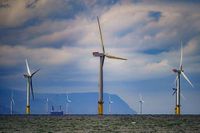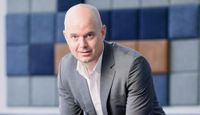Across Africa and the Middle East, a wave of ambitious solar power projects is reshaping the energy landscape, promising not just cleaner air but also more reliable electricity for millions. As governments and corporations race to meet climate goals and secure energy independence, three recent developments stand out—each breaking new ground in scale, technology, or business model.
In South Africa’s Mpumalanga province, Red Rocket, a Cape Town-based independent power producer, has just achieved financial closure for its Tournee Solar Park, according to a company announcement on October 9, 2025. This isn’t just another solar farm; with a contracted capacity of 300 megawatts (MW) and an installed capacity of 331 MWp, it’s set to become one of the country’s largest solar energy developments. The project, slated to be operational by 2027, will harness some 463,000 bifacial solar modules—these capture sunlight from both sides—mounted on single-axis trackers to follow the sun’s path across the sky. All that power will be funneled into the national grid via a 132-kilovolt overhead line.
The numbers are eye-popping: an estimated 720 million kilowatt-hours (kWh) of electricity generated annually over a 20-year lifespan, enough to power roughly 224,000 homes. The environmental impact? About 709,200 metric tonnes of carbon dioxide equivalent (CO₂e) emissions saved each year. That’s a meaningful dent in South Africa’s carbon footprint, and a clear win in the fight against climate change.
Getting a project of this scale off the ground takes more than good intentions. Financing for the Tournee Solar Park is the result of a collaborative effort among Absa Bank, Standard Bank, and the Development Bank of Southern Africa, with the Red Rocket Opportunity Trust serving as the Black Economic Empowerment (BEE) partner. The project is underpinned by a 20-year Power Purchase Agreement (PPA) with Discovery Green, a move that provides long-term revenue certainty and signals confidence in the venture’s viability.
Matteo Brambilla, CEO of Red Rocket, didn’t mince words about the significance of the milestone. “Reaching financial close for Tournee Solar Park marks a proud moment for Red Rocket, representing not only our enduring commitment to South Africa’s renewable energy landscape, but also the strength and immense value of partnerships. This achievement is a testament to our dedication, the confidence of our lenders, and the collaboration with our off-taker, Discovery Green. We remain steadfast in our relentless pursuit of powering the future and advancing the energy transition,” he said, as reported in the company’s announcement.
The Tournee Solar Park is just one piece of Red Rocket’s growing portfolio. The company recently secured three additional solar projects in the government’s Renewable Energy Independent Power Producer Procurement Programme (REIPPPP) Bid Window 7, underscoring its leadership in both the utility and commercial sectors. This isn’t the first time Red Rocket and Discovery Green have teamed up—earlier in 2025, the duo celebrated the financial closure of the Overberg Wind Farm Phase Two. Looking ahead, the Virginia Solar Park, another massive grid-connected venture, is set to be executed by PowerChina (HDEC) and Green Whistle, further cementing Red Rocket’s role as a key player in South Africa’s clean energy transition.
Meanwhile, in Abu Dhabi, a project of even grander scale is underway. Masdar, in partnership with the Emirates Water and Electricity Company (EWEC), has announced the world’s first gigascale 24/7 solar and battery storage project. This initiative, unveiled on October 9, 2025, aims to deliver up to 1 gigawatt (GW) of renewable baseload power every day—a feat made possible by combining 5.2 GW of solar photovoltaic (PV) capacity with a cutting-edge 19 gigawatt-hour (GWh) battery energy storage system. The price tag? A cool US$6 billion.
What sets the Abu Dhabi project apart isn’t just its size—it will span an area comparable to Manhattan—but its ambition to provide stable, round-the-clock clean energy. This addresses one of the biggest challenges in renewables: intermittency. Mohamed Jameel Al Ramahi, CEO of Masdar, framed the project’s significance in the company’s documentary series, Power to Change: “Clean power isn’t just available when it’s generated, but exactly when it’s needed. Our goal is to replicate and expand similar projects globally, sharing this model with the world.”
The environmental payoff is enormous. The project is expected to avoid 5.7 million tons of carbon emissions annually and to meet about one-third of the United Arab Emirates’ 2030 renewable energy targets. For the UAE, which has long been synonymous with oil, this is a bold step toward a sustainable future. Al Ramahi summed up the vision: “The future of energy is clean, the future of energy is constant, and most importantly the future of energy is affordable.”
Back in South Africa, innovation isn’t limited to sheer scale. The SOLA Group has just achieved early commercial operations for the Springbok Solar Power Project, Africa’s first multi-buyer, energy wheeling facility. Delivered ahead of schedule, the 195 MW solar PV plant is the largest project in SOLA’s history and a breakthrough for how corporations can source renewable energy on the continent.
Amazon played a pivotal role as the anchor buyer, providing the long-term commitment that unlocked financing and reduced risk. But the project’s reach extends well beyond one tech giant. Other contracted buyers include Sibanye-Stillwater, Sasol, Afrimat, Redefine, Old Mutual, and Vodacom. The latter’s involvement is especially noteworthy: Vodacom’s participation enables South Africa’s first virtual wheeling power purchase agreement, allowing companies connected to both Eskom’s and municipal grids to access renewable energy. This opens the market to buyers who were previously shut out of clean power deals.
James Hickman, AWS country manager for South Africa, highlighted the broader significance: “As part of our commitment to being net-zero carbon by 2040, AWS [Amazon Web Services] is proud to support innovative renewable energy projects like Springbok Solar Power Project. This collaboration not only advances our sustainability goals but also helps pioneer new models for corporate renewable energy procurement in Africa. The multi-buyer approach demonstrates how cloud and sustainability can work together to create scalable solutions for businesses of all sizes.”
The impact isn’t just environmental. The Springbok project has already invested R375 million in local communities, created over 500 jobs, and offsets approximately 399,000 tonnes of CO₂ annually—equivalent to planting 6.5 million trees. It also plans to supply power to the Southern African Power Pool starting October 2025, helping to address regional energy shortages. Community initiatives in the Matjhabeng Municipality, from youth sports to accredited sewing and fashion training, are delivering tangible social benefits.
Jonathan Skeen, managing director at SOLA Group, summed up the achievement: “Springbok Solar Power Project cements our role as South Africa’s pioneering wheeling IPP, offering a range of long- and short-term products to our clients. Our collaboration with Amazon has been instrumental in enabling South Africa’s first wheeling project in 2020 and now Springbok, Africa’s first multi-buyer virtual wheeling facility. Delivered ahead of schedule, Springbok demonstrates that renewable energy can be provided reliably, flexibly and at scale.”
As these projects come online, they’re not just generating electricity—they’re powering new possibilities, fostering innovation, and bringing communities along for the ride. The road to a renewable future is long, but with milestones like these, the journey is picking up speed.





